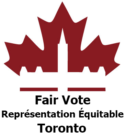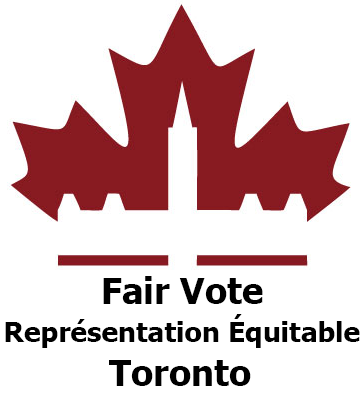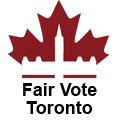
People should get the representation they vote for.
Most people assume that when they vote their votes will go towards electing someone to represent their views, and that the proportion of everyone’s views will be represented accurately in Parliament.
In other words, the percentage of votes for a certain view should translate into the same percentage of MPs in Parliament. This is only common sense, as Parliament should represent the will of its citizens as closely as possible.
This principle is known as proportional representation, and is the norm in most developed countries in the world. This includes almost all of Europe, about half of Asia and Africa and almost all of South America.
But this is not true in Canada.
Many new voters, as well as those who have voted for years, are often surprised to find out that proportional representation is not the norm in Canada. In fact, in Canada there is a huge discrepancy between the representation that voters vote for and the representation they receive.
Below are the results of the recent federal election in October 2019. As you can clearly see, what people voted for did not translate accurately into representation in Parliament.
2019 Federal Election

The 2019 Federal Election resulted in one of the worst cases of misrepresentation in Canada. Not only do we have a Parliament that undemocratically over-represents of the views of some voters, and under-represents of the views of others, this election created a highly unusual and undemocratic scenario.
The current voting system can result in artificial winners.
As we can see, in 2019 only 33% of voters voted for Liberal representation. That is less than 1/3 of voters. Yet Liberal voters received 46.4% of the MPs. In other words, Liberal voters are being over-represented by over 13.4%.
This in itself is a problem, but there is also another problem with this result…more people voted for Conservative representation at 34%. Conservative voters should have received the most MPs but they did not.
Instead, we have an artificially created winner – one that resulted from the voting system, not from the actual votes of people.
This election was also unusual because it also produced a second artificial winner. 15.9% of Canadians voted for NDP representation, and 7.7% voted for the Bloc Quebecois. Yet Bloc voters received 9.5% of the MPs while NDP voters only got 7.1%. Bloc voters received more representation than NDP voters, even though there were twice as many NDP voters. NDP voters are being under-represented by 8.8%; less than half of what they voted for.
Furthermore, despite the fact that the number of Canadians who want Green representation has grown to 6.5%, Green voters received only 1% of the MPs. Green voters should have received 22 MPs. Instead, they only received 3.
It is clear that no one is being fairly represented using this voting system. Continuing to use a voting system that misrepresents voters in this way is unjustifiable.
2018 Ontario Election

The results of the Ontario election of 2018 illustrates a different problem that can happen when an electoral system misrepresents its voters. In 2018, only 40.5% of voters voted for Conservative representation. Yet because of the voting system, they received 60.5% of the MPs, which is an over-representation of 20%.
The current voting system often results in artificial majorities.
In this situation the over-representation of views has resulted in a party winning more than 50% of the seats in the Legislature, creating a majority where a majority never existed in the first place. This artificial majority is an injustice to citizens because they are now subject to the policies of a government whom 60% do not even support.
Unfortunately, artificial majorities are very common. Almost every majority government in Canada, both Liberal and Conservative, have been artificial majorities. Artificial majorities are the main reason why politicians find it difficult to move away from the current system to a proportional system where a majority would be nearly impossible.
Majorities should not exist in Canada

The reality of the matter is, no political view in Canada has majority support. Since 1921, there have been only four times that voters have given more than 50% of their support to one party. Yet during this time there have been 16 majority governments.
Every political view in Canada is truly only held by a minority of people. It is wrong and undemocratic to use a voting system that artificially creates majorities out of minorities.
Proportional representation is the right thing to do.
The right thing to do is to represent people in proportion to their views. Most democracies have recognized this and have adopted proportional representation.


